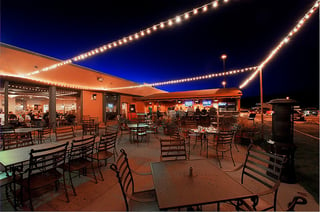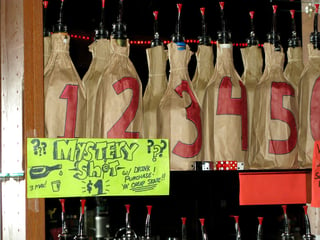A common mistake that many bars make is having too much inventory on hand. Often, bars will order products until all the shelves in their storeroom are full. While this may work for some establishments, you really should have a smarter system for your ordering practices to ensure that you’re making the best use of your resources.
There are some best practice rules to keep in mind when deciding how much product to keep on hand:
- Don’t run out of any products – This is your #1 priority. That being said, there are some benefits to streamlining the amount of extra product you keep on hand, so try and keep the least amount that ensures you won’t run out.
 Try to leverage volume discounts and free products when it makes sense – In some states such as Colorado, you can receive free bottles for ordering in bulk. It’s important to evaluate these opportunities individually to determine which ones are worth taking advantage of.
Try to leverage volume discounts and free products when it makes sense – In some states such as Colorado, you can receive free bottles for ordering in bulk. It’s important to evaluate these opportunities individually to determine which ones are worth taking advantage of.
You should always make a conscious decision regarding how much of a product you go through and how much you really need. Sometimes these discounts aren’t worth the hassles of keeping so much extra product on hand for months at a time.- Always calculate the value of the discount – Make sure you calculate the percentage return you need to see to make ordering in bulk worthwhile.
For example, if you can get a free case for buying 5 cases in bulk, this constitutes a 20% discount which would probably be worth tying up the capital and the real estate in your storeroom required to order such a large volume. But if you’re only getting a couple of free bottles for your large bulk order, it may not be a smart use of your resources.
What’s the Harm in Having too much Extra Product on Hand?
You should always look at the amount of inventory you keep in stock as a measure of your financial efficiency. After all, inventory on hand is money you’re tying up that could be put to use elsewhere in your business. There are a lot of other resources you can allocate those funds to that might drive business more than having a massive amount of excess inventory that’s just collecting dust.
 For example, if you have $5,000 tied up in extra product that you won’t need for several months, that’s money you aren’t able to spend on improvements to your bar. This $5,000 could be used to pay for the new patio you’ve been trying to build or the new TVs you need to purchase. You could also spend a portion of that money to beef up your marketing efforts, which may drive new customers to your bar.
For example, if you have $5,000 tied up in extra product that you won’t need for several months, that’s money you aren’t able to spend on improvements to your bar. This $5,000 could be used to pay for the new patio you’ve been trying to build or the new TVs you need to purchase. You could also spend a portion of that money to beef up your marketing efforts, which may drive new customers to your bar.
Another caveat to consider is that more product on hand equates to more risk. We’ve seen this countless times with many of our Colorado bars. In Colorado, you can get better deals for buying cases. This leads many bars to have multiple cases of Jägermeister on hand since it’s a popular shot. Often, we’ve seen this have a negative impact on accountability.
The bar staff sees a large excess of Jägermeister in the storeroom and as a result, more if it is given away for free, either in the form of free shots for customers or bartenders taking additional shots during their shift. We’ve seen some of the bars we work with experience as much as a 10% drop in the accountability for a product when too much is kept in stock.
Variables to Consider when Ordering Products
You should keep the following variables in mind when trying to achieve the right balance regarding how much product to keep on hand at a particular time:
- Product selection – The larger your product selection, the more inventory you need to have on hand since you need back-ups for every product you sell. In general, we recommend adhering to a “less is more” philosophy regarding your product mix. You can often leverage higher profits by streamlining the number of products you offer.
- Frequency of rotation – The more you rotate and change up your products, the more likely you are to have dead stock that you no longer sell. This is highly problematic and eats into your profit margin.
You need to think carefully about the number of products you want to have on hand as well as how many of these products will be rotated seasonally. For most bars, rotating products twice a year is sufficient, and you should only rotate a small percentage of the products you sell, typically the ones that don’t perform well. - Dead stock – This is stock that’s literally collecting dust. You know that these products aren’t moving since they’ve been in your storeroom long enough to accumulate dust. In these situations, why are you keeping so much of this extra product on hand?
 Upcoming events/predicted volume – There are events that occur during the year that predictably boost the volume of product you’ll go through. Common examples are New Year’s Eve, the Super Bowl (for a sports bar), or St. Patrick’s Day (for an Irish bar).
Upcoming events/predicted volume – There are events that occur during the year that predictably boost the volume of product you’ll go through. Common examples are New Year’s Eve, the Super Bowl (for a sports bar), or St. Patrick’s Day (for an Irish bar).
When you know you need additional inventory on hand for a high sales volume event, make sure you increase your order accordingly. You know you’ll be able to sell most of the extra product on hand during this busy time and it’s important to be prepared in case your increase in sales volume is larger than you anticipate.
How much Inventory should I Keep on Hand at My Bar?
Bar-i software has tracked the inventory needs for hundreds of clients nationwide. This large sample size has led us to draw the following conclusions regarding the appropriate amount of inventory to keep on hand:
- Always keep the ratio of what you have on hand to what you use each week to below 4:1
- Best practice is to keep this ratio in the 2.5:1 to 3:1 range
When we start working with a new bar, we often see this ratio exceeding 8:1. If you’re keeping this much inventory on hand, you’re absolutely mismanaging your resources and you need to re-evaluate your ordering practices.
How to Calculate this Inventory Ratio
We always recommend calculating weekly usage since most bars receive deliveries on a weekly basis. You should also be calculating these inventory ratios by category – bottled beer, draft beer, liquor, and wine.
Multiply your liquor cost by your sales in each category to calculate your weekly usage of these products. For example, a low volume bar that does $5,000 per week in draft beer sales at a 20% liquor cost is using $1,000 of draft beer products per week.
Next, divide your current value on hand after taking inventory by your weekly usage. It’s important to do this immediately after taking inventory since you should know exactly how much of each product category you have on hand. In the low volume bar example above, if you have $4,000 of draft beer on hand and your weekly usage was $1,000, then your ratio is 4:1.
Once you’ve calculated your ratio, use the following guidelines to evaluate how well you’re doing:
- 2.5 : 1 to 3:1 – Excellent work
- At or below 4:1 – Nice job
- Above 4:1 – Room to improve
In actuality, the acceptable ratio for each category is somewhat different. Draft beer is typically the lowest (in the 2:1 to 3:1 range) since most bars typically have fewer draft beer selections offered. In contrast, the ratio for liquor is highest (often in the 5:1 range) since most bars offer vastly more liquor selections.
When evaluating your bar’s performance using the guidelines listed above, take the average of the ratios for every category to see if you’re doing an excellent job, a solid job, or have room to improve in terms of the overall inventory kept on hand for all products.
Tips to Improve Your Ratio when it’s too High
The following tips will help you achieve a more sustainable ratio of products on hand to products being used:
- Reduce your product selection – The sales pattern for most bars adheres to the 80/20 rule, which states that 80% of your sales typically come from 20% of your products. Therefore, you may want to think more critically and strategically regarding whether you need all of the remaining 80% of products which are only generating 20% of your sales.
 Create specials to help you move through dead stock – We’d like to highlight the work done by Park House, one of our Denver bars. They’re doing a great job with their inventory and have a 2.43:1 ratio, which is exceptional. One of the ways they’ve been able to achieve this low ratio is by finding creative ways to sell their dead stock.
Create specials to help you move through dead stock – We’d like to highlight the work done by Park House, one of our Denver bars. They’re doing a great job with their inventory and have a 2.43:1 ratio, which is exceptional. One of the ways they’ve been able to achieve this low ratio is by finding creative ways to sell their dead stock.
When Park House receives free products with their orders (often eclectic bottles that are difficult to sell), they use them as “mystery shots.” These bottles are placed in brown paper bags to conceal their identity, and Park House charges $2 for a shot of this mystery liquor. Customers don’t know what they’re getting, but the price is very low and the mystery aspect creates a buzz that entices customers to take a chance on the shot. To maintain the aura of mystery, customers don’t even learn the identity of the shot after they’ve drank it.- Seasonal product rotation – Don’t just constantly take on new products every time your distributor comes in with a new suggestion. Instead, have guidelines for what products you want to offer for the next 3 month or 6 month season.
When you’re near the end of the season, consciously decide which products you want to get rid of based on low sales volume and then make distributors bid on the new products you plan on bringing in as a replacement. By forcing the distributors to compete for your business, you’ll be able to secure the best possible prices for the new products you add next season. - Monitor regularly – Use the calculation guidelines we just discussed to regularly monitor this ratio. If you see it climbing above 4:1, you’ll know it’s time to re-evaluate your ordering practices.
- Set goals – Always have a goal in mind that you’re striving to achieve, both for the number of products you offer and for the on-hand inventory ratio.
Bar-i Can Help
Bar-i offers several different liquor inventory services that can help you maintain the proper ratio of inventory on hand:
- Use Bar-i’s Speed Count system (costing $50/month) and receive an order guide every time you do inventory. This order guide is based on fixed pars you enter into the system, and it will help you order accurately.
- Use Bar-i’s Speed Count Pro system (starting at $300/month), and your regular inventory reports will also include the ratio of products on hand to products used.
In addition, the Speed Count Pro order guide compares your current stock with dynamic pars. Our software creates these dynamic pars by tracking how much you’re using of every product over the last 5 audit cycles, and you can tell the system how many days’ worth of product you want to have on hand.
If you would like to learn more about how Bar-i’s liquor inventory system can help you streamline your processes and maximize profitability, please contact us today to schedule a free consultation. Bar-i serves clients nationwide from our offices in Denver, Colorado.


-1.png)